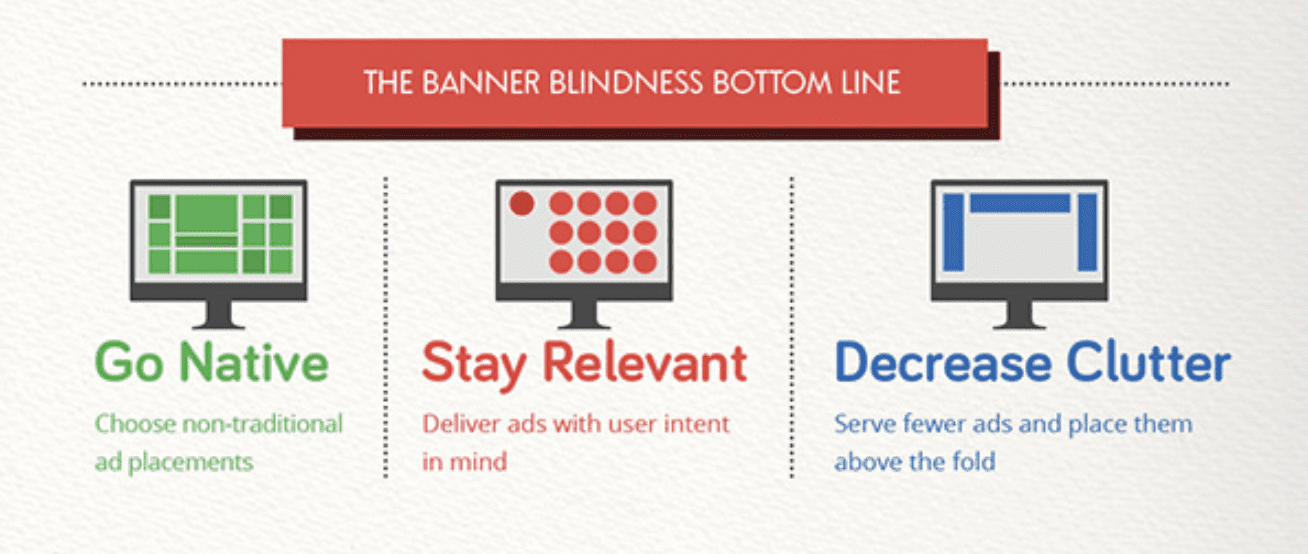In the ever-evolving landscape of digital advertising, banner blindness remains a significant challenge for marketers. This phenomenon occurs when users unconsciously ignore banner ads, leading to decreased engagement and wasted advertising spend. To effectively combat banner blindness, advertisers must adopt innovative strategies that enhance visibility and user engagement. Below are some key approaches to overcoming this issue.
Understanding Banner Blindness
What is Banner Blindness?
Banner blindness refers to the tendency of users to overlook banner ads while browsing online content. Research indicates that users actively avoid content resembling traditional advertisements, resulting in low click-through rates (CTR) and diminished ad effectiveness. According to HubSpot, the average CTR for banner ads is a mere 0.35%, with over 80% of users ignoring these ads altogether. This highlights the urgent need for advertisers to rethink their strategies.
Strategies to Overcome Banner Blindness
1. Utilize Native Advertising
Native advertising seamlessly integrates ads within the content, making them appear less intrusive and more relevant to users. By matching the look and feel of surrounding content, native ads can significantly improve user acceptance and engagement. Studies show that native ads are viewed 53% more often than traditional banner ads, leading to an 18% higher purchase intent due to their non-intrusive nature.
2. Enhance Ad Relevance
The relevance of an advertisement plays a crucial role in capturing user attention. Ads that align closely with users’ interests and current context are more likely to be noticed and engaged with. Employing targeting and personalization strategies can enhance ad relevance, making them feel like valuable content rather than interruptions.
3. Implement Interactive Elements
Incorporating interactive elements such as quizzes, polls, or games can significantly increase user engagement with ads. For instance, Dove’s “Real Beauty Sketches” campaign utilized interactive features that encouraged participation, resulting in over 163 million views and a substantial increase in social media sharing. Such campaigns demonstrate how interactive content can effectively break through the clutter of traditional advertising.
4. Optimize Ad Placement
Strategic ad placement is essential for maximizing visibility. Ads should be positioned in areas where users are naturally inclined to look, such as following the ‘F’ pattern commonly observed in Western reading habits. By understanding audience behavior and preferences, advertisers can enhance the likelihood of ad engagement.
5. Leverage Influencer Marketing
Partnering with influencers can also help combat banner blindness. Influencers can create authentic connections with their audience, making promotional content feel more organic and less like traditional advertising. This strategy not only increases visibility but also fosters trust among potential customers.
Future Trends in Digital Advertising
Adapting to Evolving User Preferences
As digital landscapes evolve, so do user preferences and behaviors. The integration of AI and machine learning allows for real-time analysis of user interactions with ads, enabling dynamic adjustments that cater to individual preferences. However, balancing personalization with privacy concerns will be a critical challenge for marketers moving forward.
Emphasizing Visual Appeal
To stand out in a crowded digital space, advertisers must focus on creating visually appealing and unique ad designs. Utilizing dynamic content that captures attention without being intrusive can significantly enhance user interaction.
Banner blindness poses a formidable challenge for digital marketers, but by implementing effective strategies such as native advertising, enhancing ad relevance, utilizing interactive elements, optimizing ad placement, and leveraging influencer marketing, advertisers can successfully combat this issue. As user behaviors continue to evolve, staying ahead of trends and adapting strategies accordingly will be crucial for maintaining engagement and driving conversions in the digital advertising landscape.

